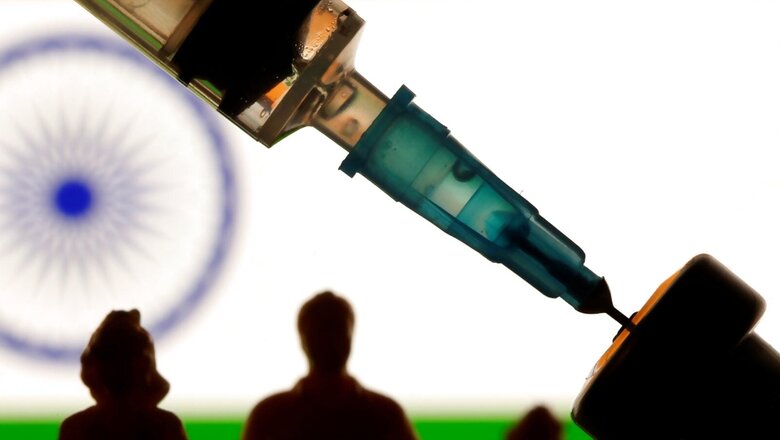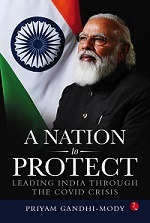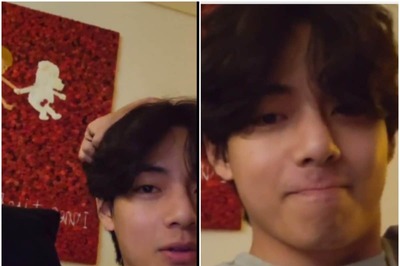
views
Speaking of vaccine development, never before has India incubated companies by engaging in proactive risk financing on a scale as enormous as this. The model of an ‘entrepreneurial state’ was envisioned by the prime minister and subsequently achieved with the prime objective to inoculate all Indians as soon as possible. Ever since Indian manufacturers had begun to show success in vaccine research, the project occupied a special place in his heart. He was determined to make the model a success, thus setting an example for decades to come, not just in vaccine research but in other important sectors as well. All in all, the prime minister placed his bet on India’s domestic manufacturers versus yielding to pressure by international vaccine companies.
Not only had adequate financing been arranged, but the GoI also cleared roadblocks and were instrumental in strengthening end-to-end systems in vaccine development, manufacturing and distribution processes which are typically highly complex, multistage processes. For instance, 11 Good Clinical Practice (GCP)-compliant clinical trial sites had been established, with each site having access to a cohort of 50,000 to 1 lakh healthy volunteers who could be tracked for long periods of time in order to facilitate human trials. Five of these sites were equipped to also carry out seroepidemiology studies which would provide critical information to estimate the spread of the virus in certain communities so that specific, localized policies could be planned. In addition, 35 clinical trial sites in hospitals were also set up to ensure that no time was lost in recruitment and carrying out of trials.
By this time, SII and Bharat Biotech were in advanced stages of Phase III clinical trials and their data was looking solid. NEGVAC (National Expert Group on Vaccine Administration for COVID-19) engaged extensively with them in real time, along with others such as Zydus Cadila to chart out production capabilities and set achievable vaccination goals. NEGVAC’s vaccination strategy was based on two components: the information coming in simultaneously from the manufacturers that vaccine availability would be limited in the first six months due to restrictions in their capacities. Even if capacities were ramped up, which NEGVAC and the GoI did finance, output would not increase overnight. It would take three to four months at the bare minimum to set up additional capacities. At this point, the input from NEGVAC to the PMO, after consultations with SII and BBIL, was that by the end of August 2021, around 60 crore doses may be available: about 47 crore from SII and 13 crore from BBIL. The second component in the strategy was to plan who to inoculate on priority such that 30 crore high-risk individuals who had the maximum chance of mortality could get some level of protection before the second wave hit the country. Healthcare workers followed by frontline workers and senior citizens would have to be high up on the priority list once the vaccine drive roll-out began.
NEGVAC was also in close conversation with Pfizer, Moderna, Johnson & Johnson as well as Sputnik. However, it became clear early on that unless we adopted a technology transfer model and began to manufacture large doses of the vaccines within the country, the amount these companies could spare was extremely insufficient in comparison to our demand. Pfizer was willing to give us about 50 million doses and Moderna only about 7.5 million. To top that, Pfizer and Moderna didn’t want to conduct bridge trials in India, were quoting a very high price per dose ($20–25) and expected full legal indemnity. In addition to that, the cold-chain logistics for safe transportation of mRNA vaccines was going to be a huge challenge for us.
ALSO READ | Pfizer’s Reckless Policy on Allocation & Pricing of COVID-19 Vaccine Endangers the World
Despite these negatives, NEGVAC was in pursuit to procure the technology and transfer it to an Indian company which would manufacture the vaccines locally. Pfizer denied the request at the time, noting that technology transfer could only take place after the pandemic phase was over and the regular supply phase had begun. This was rather strange, since they had already committed to transfer technology to a Chinese firm called Shanghai Fosun Pharmaceutical. Also, the clauses in the contract which they were making countries sign were very problematic to say the least—not only could countries not hold them liable for bad batches of doses but also had to indemnify them against adverse effects, supply delays or even total failure to supply. Even more frightening were clauses which prevented countries from introducing any potential drugs which would emerge as a cure for COVID-19 before Pfizer received authorization.
To top this, countries would have to pay in full the cost of ordered doses regardless of authorization or delivery delays or a quality problem. In the event they failed to do so, it would be considered as breach where no domestic law of the land would hold and the jurisdiction of the courts of New York would have the power to acquire current and future sovereign assets of the purchasing country until all dues—for the vaccines as well as all legal fees—were paid. In fact, alarming reports later surfaced about how Pfizer failed to reach a deal with Brazil and Argentina because the company engaged in ‘high-level bullying’ during negotiations to come to a deal. They attempted to hold developing Latin American countries to ransom by asking them to put up federal bank reserves, embassy buildings or military bases as guarantee against the actual cost of the vaccines and also future legal cases stemming from adverse effects of their vaccines.
At the same time, NEGVAC connected Dr Reddy’s Laboratories in India to Russian Direct Investment Firm and Gamaleya to commence adaptive Phase II/III clinical trials for the Sputnik V vaccine. Adopting a technology transfer model, Dr Reddy’s would mass-produce and distribute the vaccine in India. Interestingly, Dr Reddy’s has never manufactured vaccines and not only did NEGVAC successfully connect them to the Sputnik team but also ensured that Dr Reddy’s tied up with six Indian companies to further pass on technology to manufacture Sputnik.
Similarly, Johnson & Johnson, in partnership with Biological E in India, had also begun Phase I/II trials in the country on a technology transfer model. In this case too, since the technology platform that Biological E used was one which would attack the receptor-binding domain (RBD) subunit—a crucial step in the process of how the infection spreads in the body—the required raw materials needed to be imported. Not only did the GoI, through NEGVAC, facilitate the import of these, but also placed an advance order worth Rs 1,500 crore with the company which would be adjusted later on delivery of the doses in order to provide them critical financial assistance to purchase the required raw materials. Following the initial Rs 25 crore of seed fund, Gennova, which was manufacturing India’s first mRNA vaccine, was provided over Rs 100 crore to further upgrade facilities, purchase raw material and conduct Phase III trials.
ALSO READ | Another Year, Another Wave: 10 Tips from a Top Scientist on How to Live with COVID in 2022
As soon as the vaccines became available, NEGVAC began to simultaneously plan the logistics of their equitable and correct distribution, with minimal wastage. Innovative technologies and digital trackers would have to be used while relying on some of our tried-and-tested measures of vaccine distribution. eVIN portal, an indigenously developed technology system which was capable of digitizing vaccine stocks and monitoring the temperature of the cold chain through a smartphone application, was planned to be upgraded and repurposed. eVIN was already being used in 12 states and was created in order to support the GoI’s Universal Immunization Programme by providing real-time information on vaccine stocks and storage temperatures. Cold chain handlers were provided eVIN-enabled smartphones which would allow for digitization of vaccine inventories when they would enter net utilization for each vaccine at the end of every immunization day. These entries would simultaneously be uploaded on a cloud server to which programme managers at district, state and national levels had access to via an online dashboard which they could further use to replenish diminishing stocks.
In addition, SIM-enabled loggers could be attached to cold chain equipment with capacities to capture temperature information through digital sensors placed in the refrigerators every 10 minutes. In case of a temperature breach, the logger alarms would send SMS and email alerts to the respective managers and technicians, inciting a quick response, thus saving vaccines from going bad. Over 17,000 people were already trained to use the eVIN technology, which meant that it could be scaled up easily and rather quickly. It was e-VIN which would later become CoWIN after significant technological interventions with user interfaces. In line with the prime minister’s directions in June 2020, CoWIN was conceived to satisfy a need for a digital health ID to ensure that no Indian got left out from the vaccination process. They concurred that management of such a technological backbone would have to be handled by a separate expert team outside of NEGVAC.
Furthermore, NEGVAC had also brainstormed on the list of the initial recipients of the vaccine based on the WHO’s recommendations which would include three crore people with maximum risk exposure. One crore doctors and two crore healthcare workers, central and state police forces, home guards, Armed Forces, municipal and Asha workers would be inoculated on priority.

Read all the Latest Opinion News and Breaking News here



















Comments
0 comment